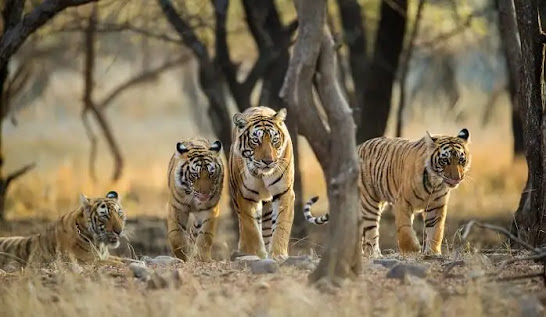Wildlife: The Importance of Protecting Our Fauna and Flora
"Discover the importance of wildlife and learn how to protect it. From maintaining biodiversity to providing cultural and economic benefits, learn why preserving our flora and fauna is vital. Take action now to conserve our planet's unique diversity."
Wildlife refers to all non-domesticated plants, animals and other organisms that exist in their natural habitats. From majestic elephants to tiny insects, the diversity of wildlife is what makes our planet so unique and beautiful. Unfortunately, many species are facing extinction due to habitat loss, poaching, hunting, and other human activities.
The Importance of Wildlife
Biodiversity: Wildlife plays a crucial role in maintaining biodiversity, which is the variety of species that live in a particular habitat. A healthy ecosystem requires a diversity of species to perform various functions, such as pollination, pest control, and soil conservation.
Ecosystem Services: Wildlife provides many ecosystem services, such as air and water purification, climate regulation, and soil conservation. These services are essential for maintaining the balance of our planet and preserving the quality of life for all species.
Economic Benefits: Wildlife has significant economic benefits, particularly in the tourism industry. People travel from all over the world to see and experience the unique flora and fauna that our planet has to offer. In addition, wildlife provides valuable resources, such as timber, food, and medicine.
Cultural Significance: Wildlife has cultural significance for many communities, particularly indigenous peoples who have a deep connection to the land and the species that inhabit it. Wildlife is also an important part of many people's personal and spiritual lives.
Tips for Protecting Wildlife
Support Conservation Efforts: Support local and international conservation efforts by donating time, money, or skills. You can also support conservation organizations that work to protect wildlife and their habitats.
Reduce Your Carbon Footprint: Reduce your carbon footprint by using energy-efficient products, reducing waste, and conserving water. These actions will help to reduce the negative impact that humans have on wildlife habitats and the environment.
Limit the Use of Pesticides and Herbicides: Pesticides and herbicides are toxic to wildlife and can have devastating effects on their health and populations. Limit their use by using natural alternatives or only using them when necessary.
Participate in Wildlife Monitoring: Participate in wildlife monitoring programs, such as the North American Breeding Bird Survey, to help scientists track the health and populations of species.
Support Sustainable Development: Support sustainable development practices, such as eco-tourism, which have minimal impact on wildlife and their habitats.
In conclusion, wildlife is an essential part of our planet and the lives of all species. By taking actions to protect wildlife, we can ensure that future generations will have the opportunity to experience and appreciate the beauty and diversity of our flora and fauna.

